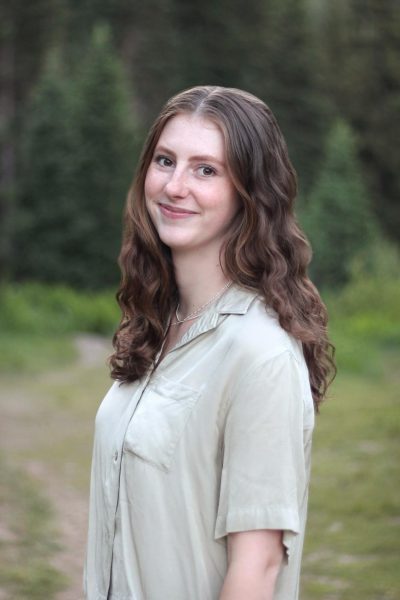Professor Brian Snapp, a tenure professor of 24 years for the College of Fine Arts has retired, leaving the ceramics area with only one tenured professor. Despite a year passing with a hole in the program, the area has yet to hire a replacement, with no plan in place to do so. In addition to having less available faculty for students, having only one tenure position within the ceramics area has broader implications.
Loss of Tenured Faculty
“People were very tentative to even speak about it,” said Christopher Woodward, the former leader of the Soap Box Committee, a student group within the College of Fine Arts.
During Woodward’s time at the U, the Soap Box Committee sponsored student town halls for students struggling with various issues within the area.
According to Woodward, the committee’s main responsibility is to collect student complaints and formulate solutions to problems, raising awareness as far throughout the college as possible.
“They basically cut one of two full time faculty, and the domino effect of that is snowballing through the program,” Woodward said. He added the area will automatically lose a graduate student, which will lead to a loss of another adjunct faculty position, which are usually made up of grad students.
Brandi Chase, a studio arts major with an emphasis in ceramics claimed, “It’s an omission, so every time that they have a meeting, it just never comes up.”
Chase added the largest issue is that the communication from the top is evasive and unclear. She said the real problem in the area lies in its failure to communicate their plans to the students.
“It’s left us all in a state of anxiety and concern about the longevity of our program,” she said.
Kim Martinez, the chair of the Department of Art & Art History, said the ceramics area “was not awarded a position due to the increased need in another discipline.”
The ceramics area website currently lists three full-time faculty, and Professor Ernest Gentry as the area head, with no information regarding an open position, nor plans of hiring new full-time faculty.
Equipment Problems
The site also claims hand building, wheel throwing, glaze calculation and kiln building as some of its main focuses; however, ceramics major Gabrielle Oman said the kilns have had trouble functioning during her time at the U.
“We’re told that it can’t be fixed or that the only person who can fix it is Shawn [Porter], who is in charge of fixing everything in the entire arts department,” Oman said. She added everyone appreciates everything Porter does, but they feel that some pieces of equipment require outside hires.
According to Martinez, recent repairs have yielded all the area’s kilns operable.
“We always tend to them as efficiently as possible,” Martinez said.
But Oman said four of the area’s kilns were not functional and one of the main kilns was broken for over a year and a half, and that the kilns haven’t been the only facilities problem the students have faced in the Department of Art & Art History.
ADA Non-Compliance
A few years ago, Oman reported struggling to get to class every day following a dislocated knee, due to extensive elevator maintenance and overall facilities problems in the arts building.
“The elevator was a big struggle for me because at that time they were trying to fix the elevator because it had all these issues,” she said. She also frequently had to go to the office and double check that she could still use the building’s only elevator during its maintenance.
Woodward said a common complaint from many art students is regarding ADA non-compliance in the building, many of whom are students using crutches or scooters for mobility.
“The parking lot that’s behind us is not ADA accessible,” Woodward said, citing the presence of a ramp on only one side of the art building.
He added one side of the building lacks a stair access point that has a ramp so ADA students must take a drop-down elevator which requires a key.
“There’s also not … wheelchair accessible bathrooms on all of the floors in the building,” Oman said.
The ADA non-compliance has not been confirmed by the Center of Disability Services.
Along with doors that open into hallways and stairwells, the building also lacks indoor security cameras, Woodward said.
According to Martinez, the Department of Art & Art History adheres to all FERPA regulations around student privacy.
Regarding the lack of cameras in the building, Martinez said, “We take safety in our buildings very seriously and encourage our students to report any concerns to us or to SafeU or the police.”
Overworked Staff
According to Woodward, the building’s lack of security cameras affects accessibility for students to use equipment due to the rule that in order to use campus equipment, students must be accompanied by a TA to act as a monitor. The position is a work study, Woodward said, and often goes unfilled.
Chase has also seen the effects of overworked staff.
“I can see the stress and the difficulties that the teachers are facing because they’re doing too much,” she said.
Snowball Effect
Many in the ceramics area fear the issues in the area are part of a snowball effect that could roll down through the entire program, according to Woodward, leading to the possibility of the area being absorbed into the area of sculpture intermedia.
“They also lose funding if they don’t have the tenure line because they can’t have the students, which also implicitly drives down classes because there’s not enough people to teach which drives down majors in general, and we get funding based on majors,” Woodward claimed.
“While we always evaluate curriculum and program structure in an effort to bring sustainable and effective learning outcomes to all students in all disciplines, there has been no announcement about or even a formal proposal regarding a structural shift between ceramics and sculpture intermedia,” Martinez said.
Still, for Chase and Oman, not having a second tenured professor means little to no access to a mentor to pursue research in the field.
“People are concerned … that the position could be fully lost,” Woodward said. “If the sculpture program is fully closed, I would assume they will not have jobs here.”
Editor’s note: This article underwent additional fact checking after publication and the following changes were made:
- The original article stated that the ceramics area was “denied” a tenure position. This has been updated to reflect the reality that a tenured professor retired and the position was not replaced, but the area was not denied.
- The ceramics area website no longer lists Snapp as the area head, and the article has been updated to reflect that.
- While students have claimed there is ADA non-compliance in the ceramics area buildings, this has not been confirmed by the CDA at the U.
- Professor Ernest Gentry is not a tenured faculty member, but holds a full-time career line position.





Christopher Woodward • Jun 16, 2024 at 12:23 am
When can we expect this to be republished?
Vanessa Hudson • Jun 19, 2024 at 10:35 am
Hi Christopher, the article has been republished!
Angela Guertler • May 9, 2024 at 10:28 am
For more accuracy, you might look at what Brian Snapp didn’t do during his time at the Fine Arts Department. Whittling down the ceramic department and then leaving it in ruin. There are a lot of factions to the issues happening for Fine Arts. Between complacent heads to overworked faculty. We need advocates and those willing to look at what has been done to bring the Ceramics department to where it is now and then work on a vision of where they want it to go. It is a problem when where it looks to be going is in the ground. I am ADA and the most frustrating part about my time in the Fine Arts building is lack of access. I fear the Fall semester with no access to the upper floors except stairs I cannot use. It’s a joke. No matter what Martinez says…